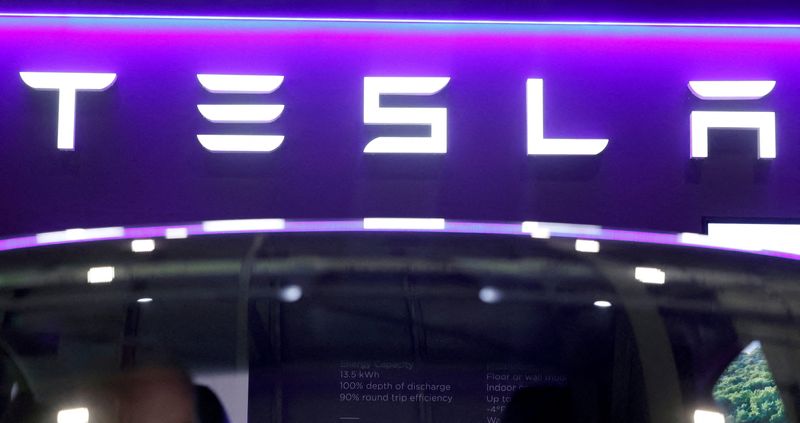(Reuters) -Tesla expects to book more than $350 million in costs in the current quarter for the mass layoffs it began last week, the automaker disclosed on Wednesday, as it shifts focus to more affordable models that it plans to introduce by early 2025.
The company is laying off about 10% of its global workforce to help prepare for the "next phase of growth" by reducing costs and improving productivity.
The electric vehicles maker said on Tuesday that it was working on "new models" that would use its current platforms and production lines -- a move that is expected to let it better control capital expenditures during "uncertain times."
Wall Street analysts expect Tesla (NASDAQ:TSLA) to report a profit of $2.24 billion for the second quarter, according to LSEG data.
While that would be lower than the year-ago figure, it is an improvement from the $1.59 billion first-quarter profit, its lowest in three years, it posted on Tuesday.
Still, the company's shares were up 12% in premarket trading as its forecast of a sales increase this year and the promise of more affordable models eased fears of slowing growth.
The demand for EVs has slowed in the past year as high borrowing costs prompt consumers to rethink big-ticket purchases, forcing companies from Tesla to Ford (NYSE:F) and General Motors (NYSE:GM) to scale back their expansion plans.
Tesla, which is planning to use its existing factories to build the new models, reiterated on Wednesday it expects capital expenditure to exceed $10 billion in 2024 and to be between $8 billion to $10 billion in each of the following years.
The plan to use existing plants could mean that investments in new factories in Mexico and India are unlikely in the near term.

CEO Elon Musk had been expected to meet with Indian Prime Minister Narendra Modi on Monday and announce major investments in an auto factory to produce a small model, but Musk canceled at the last minute citing "very heavy Tesla obligations."
Last year, Musk said Tesla would "definitely" build its factory in Mexico, but that the timing of the factory would depend on the economy and interest rates.